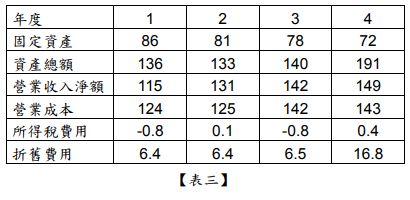

活動名稱
【解題達人! We want you!】
活動說明
阿摩站上可謂臥虎藏龍,阿摩發出200萬顆鑽石號召達人們來解題!
針對一些題目可能有疑問但卻缺少討論,阿摩主動幫大家尋找最佳解!
懸賞試題多達20萬題,快看看是否有自己拿手的科目試題,一旦你的回應被選為最佳解,一題即可獲得10顆鑽石。
懸賞時間結束後,只要摩友觀看你的詳解,每次也會得到10顆鑽石喔!
關於鑽石
如何使用:
- ✔懸賞試題詳解
- ✔購買私人筆記
- ✔購買懸賞詳解
- ✔兌換VIP
(1000顆鑽石可換30天VIP) - ✔兌換現金
(50000顆鑽石可換NT$4,000)
如何獲得:
- ✔解答懸賞題目並被選為最佳解
- ✔撰寫私人筆記販售
- ✔撰寫詳解販售(必須超過10讚)
- ✔直接購買 (至站內商城選購)
** 所有鑽石收入,都會有10%的手續費用
近期考題
【非選題】
【題組】 ⑷電腦甲欲送 IP 封包到電腦乙在何種 IP 封包選項(IP Packet Option)下,可能會 經由路由器 R2?(5 分)
四、IP 架在 Ethernet(IP over Ethernet)之網路拓樸如圖。已知電腦甲之 IP 位址:
194.17.21.16,MAC 位址:003D33AB12AA。路由器 R1 在 194.17.21.0/24 區網使用
介面(Interface)T11,其 IP 位址:194.17.21.14,MAC 位址:003D33AB12BB;在
111.0.0.0/8 區 網 使 用 介 面 T12 , 其 IP 位 址 : 111.20.18.14 , MAC 位 址 :
003D33AB12CC。路由器 R2 在 194.17.21.0/24 區網使用介面 T21,其 IP 位址:
194.17.21.68,MAC 位址:003D33AB12DD;在 192.16.7.0/22 區網使用介面 T22,其
IP 位址:192.16.7.52,MAC 位址:003D33AB12EE。路由器 R3 在 111.0.0.0/8 區網
使用介面 T31,其 IP 位址:111.30.31.18,MAC 位址:003D33AB1299。電腦乙之
IP 位址:111.25.19.20,MAC 位址:003D33AB12FF。請說明:
【題組】 ⑷電腦甲欲送 IP 封包到電腦乙在何種 IP 封包選項(IP Packet Option)下,可能會 經由路由器 R2?(5 分)
【非選題】
1.(10pt) A capacitor 100uF with initial voltage 100V is discharged to 50V by a resistor 10Ω. Determine the discharged time and energy consumption on the resistor.
【非選題】
【題組】 (一)請預估第 5 年的營業收入淨額為何?並說明您的預估方法及過程。【8 分】
第三題:
A 公司每年都會進行財務預測,以利未來營運計劃管控,其財報資料如【表三】(單位:
億元),請回答下列問題:
【題組】 (一)請預估第 5 年的營業收入淨額為何?並說明您的預估方法及過程。【8 分】
VI. Reading Comprehension
【題組】
The Native Americans of northern California were highly skilled at basketry,
using the reeds, grasses, bards, and roots they found around them to fashion articles
of all sorts and sizes. Of all these experts, none excelled the Pomo - a group who
lived near the coast during the 1800's. The Pomo people were masters of decoration.
Some of their baskets were completely covered with shell pendants; others with
feathers that made the baskets' surfaces as soft as the breasts of birds. Moreover, the
Pomo people made use of more weaving techniques than did their neighbors. Pomo
baskets made by Pomo Indian people are recognized worldwide for their exquisite
appearance, range of technique, fineness of weave, and diversity of form and use.
Making the baskets required great skill and knowledge in collecting and
preparing the needed materials. Materials for weaving baskets changed with the
seasons and years, so did the materials used for the baskets. The materials used to
make the baskets - including but not limited to, swamp canes, saguaro cactuses, rye
grass, black ash, willow shoots, sedge roots, and the root of the gray pine—were
harvested annually.
Although a wide variety of materials was available, the Pomo people used only
a few. The warp was always made of willow, and the most commonly used welt was
sedge root, a woody fiber that could easily be separated into strands no thicker than
a thread. For color, the Pomo people used the bark of redbud for their twined work
and dyed bullrush root for black in coiled work. Though other materials were
sometimes used, these four were the staples in their finest basketry. Although the
basketry materials used by the Pomo people were limited, the designs were
amazingly varied.
【題組】
43. The word "fashion" in line 2 is closest in meaning to _____.
(A)maintain
(B)organize
(C)trade
(D)create